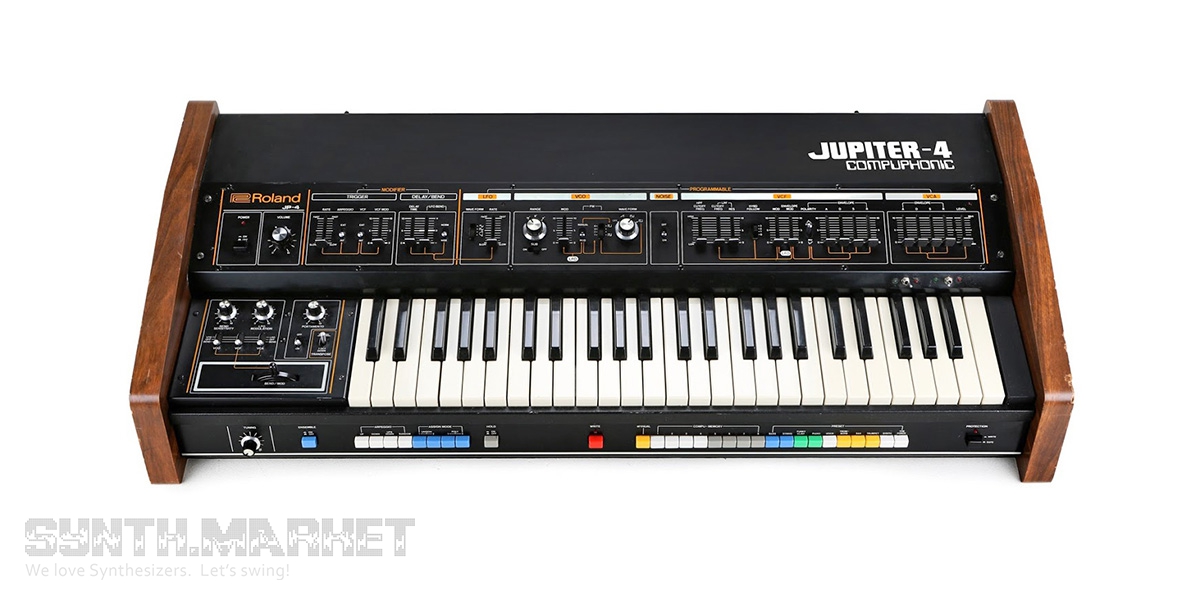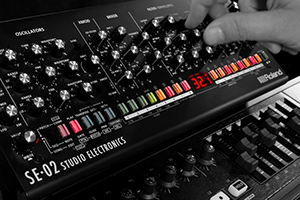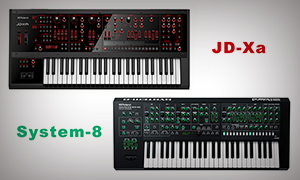Jupiter-4 is a synthesizer launched by Roland in 1978. The monotimbral instrument offers one VCO per voice. The oscillator generates triangle, square, and square with PWM, there’s a sub oscillator included. One LFO produces sine, square and ramp (ramp up/ramp down).
Filter section is represented with high pass filter and low pass resonant filter. There are two ADSR envelopes one of which is dedicated to the filter and another – to VCA.
The effects section offers ensemble and stereo chorus (based on two MN3004 ICs). There’s an arpeggiator onboard.
Jupiter-4 is the first synth in the series. It’s not the most successful Roland’s synthesizer and is hardly popular today but it started the Jupiter series and back then was among the first polyphonic synthesizers. Memory stores 8 user patches and 10 presets but the piano, strings and brass sounds don’t seem authentic. Anyway you could sync 4 voices together and get a thick sonic flow. Arpeggiator was quite amusing for some tricks, LFO was good for filter sweeps.
The synthesizer comprised digital control parts for analog circuitry which allowed programming.
Jupiter-4 was cheaper than its rivals Prophet-5 and OB-X though not as popular. Anyway Jupiter-8 solved all the problems.
The eminent arpeggio part is clearly audible in “Rio” track of Duran Duran while many new wave musicians, including Phil Oakey, made Jupiter-4 one of their favourite instruments.
Tags: analog synthesizer












